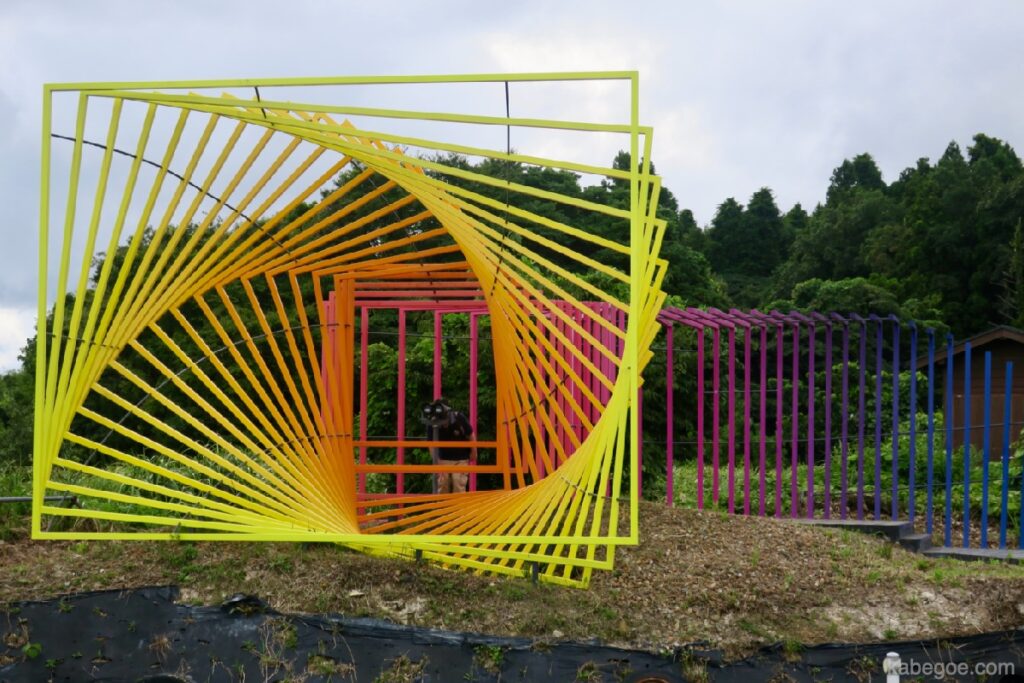
Article summary
・ I went to Oku Noto International Art Festival 2020+ (September 2021th to October 9th, 4)
・ From October 10st, you can see all the works.
・ It is a festival of contemporary art, but you can enjoy it even if you are not interested in art.
What is Okunoto International Arts Festival?

Okunoto International Arts Festival is an art festival held in Suzu City, Ishikawa Prefecture.
The second event was scheduled to be held in 2020, but it was postponed to 2021 due to the influence of Corona.
As the catch phrase "Saihate Art Festival" shows, access is poor, but it is an event that conveys the enthusiasm to liven up the area.
Outline of the event
- Date: September 2021th (Sat) -November 9th (Fri), 4 ← Decided to extend from the original October 10th
- Hours: 9:30 to 17:00
- Closed: Thursdays except public holidays (outdoor works can be viewed. Open on November 11th)
- Venue: Suzu City
What was your impression of the actual event?
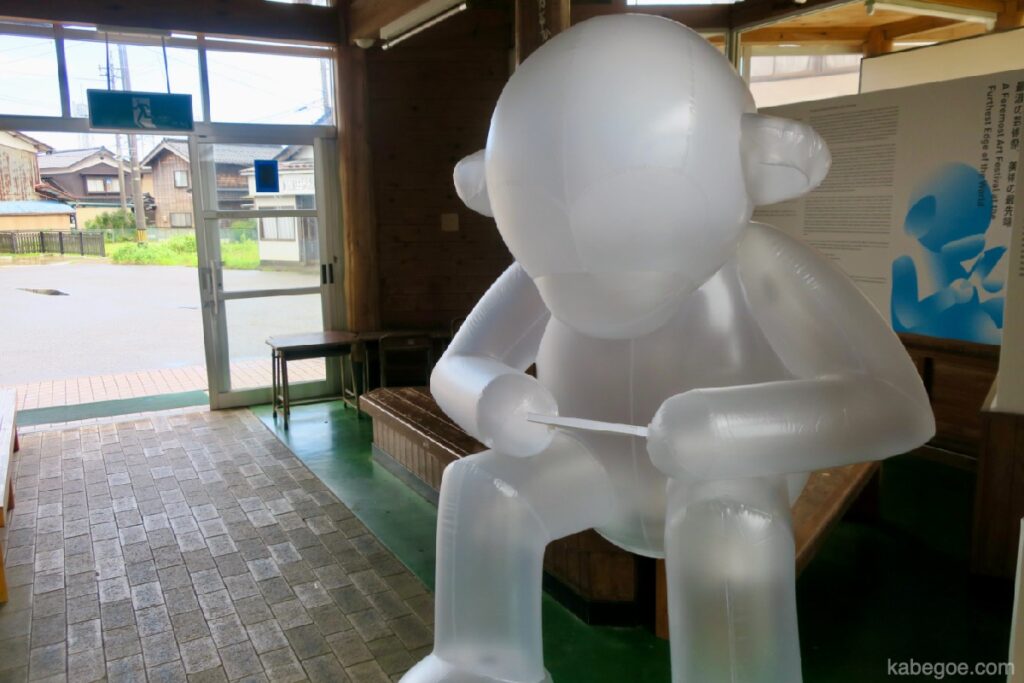
To be honest, I'm glad I went to an interesting event, even though the public works are limited due to the corona virus.
The venue often used the former elementary school and the abandoned station building, which made me feel nostalgic.
I've never been to Suzu City, so I think it was a good time.
(From October 10st, all works including indoor works will be released)
Can you enjoy it without knowing contemporary art?
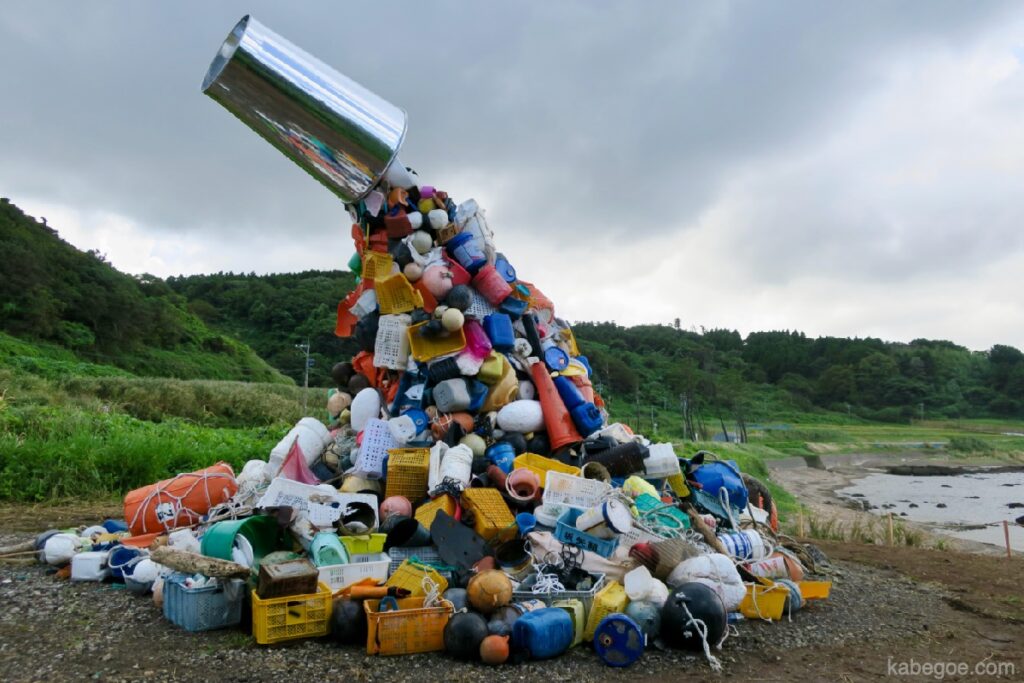
It's hard to say, but there are some contemporary art works that don't give any more impression than "What's this?"
That should be the case, because there are many patterns in which contemporary art is enjoyed after considering the background of the times and the relationship with past works.
It's like seeing only the latest episode of a TV drama and feeling "I don't understand."
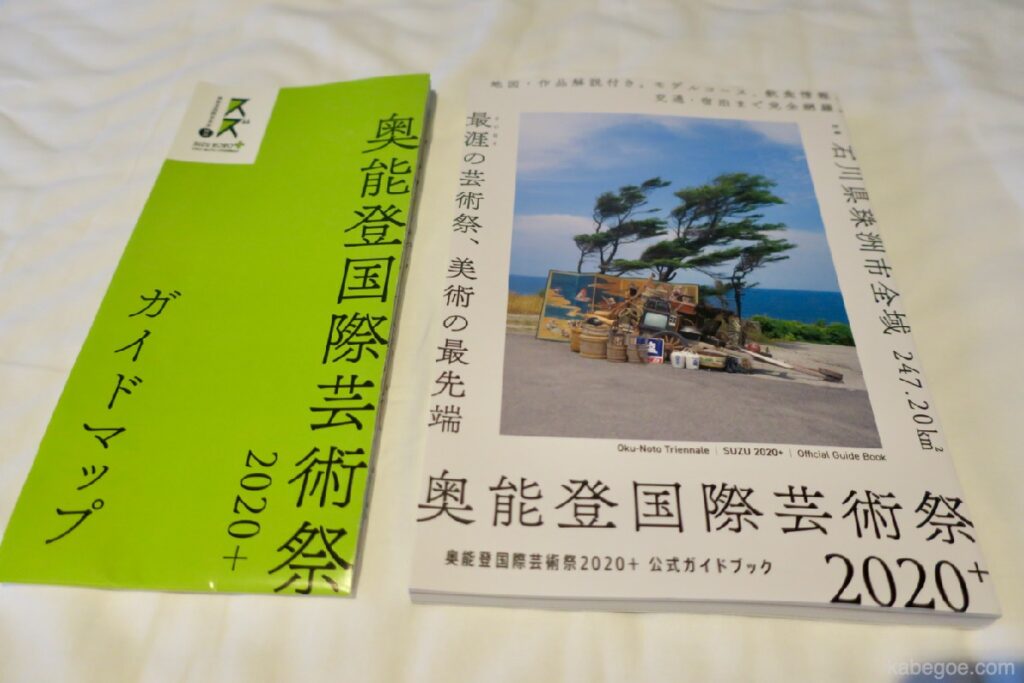
Guidebooks help me understand this, but for some of the works, I only explained the appearance and did not touch on the contents or messages.
It may be a consideration not to fix the way of enjoying, but I wanted a little more detailed explanation.
So, to be honest, the work I enjoyed was about half of the total.
Personally, I think that a certain amount of entertainment is essential for works at art events.
If you just want to show your artistry, you can open a solo exhibition and only those who like it can do it.
(The garbage mountain above is visually interesting, and it's easy to imagine it as a work related to environmental issues, so I think it's a work suitable for such an event.)
What about corona measures?
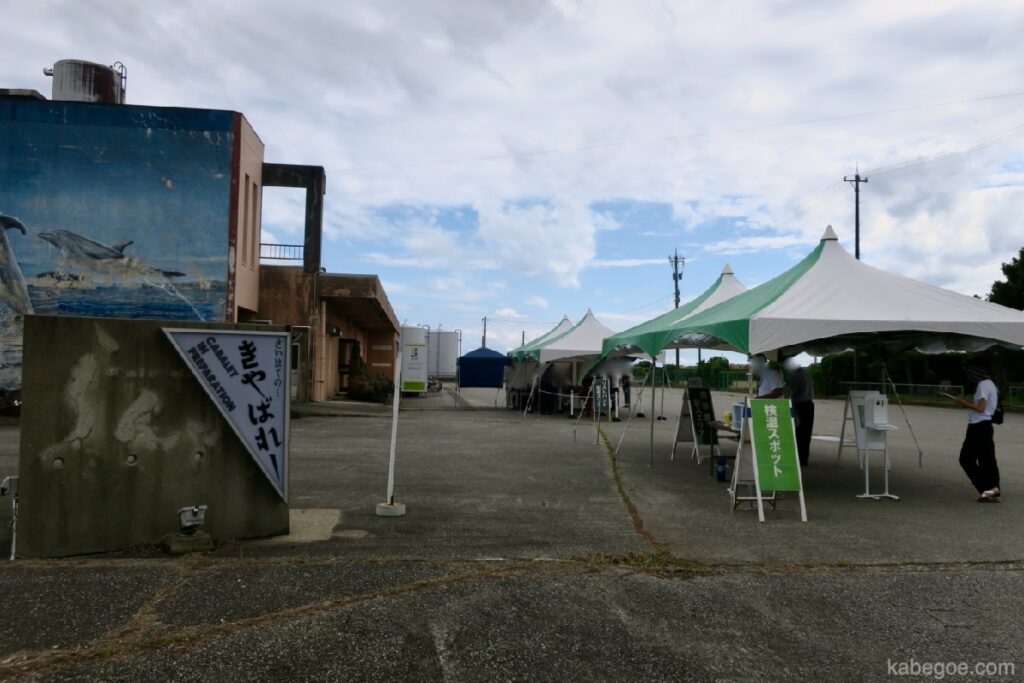
At the recent event, I was concerned about corona countermeasures, but it was a top-level response.
Basically, in order to see the works in the room, you have to go through the temperature measurement spot to enter.
Once the temperature has been measured, you will receive a "temperature-measured" wristband, so you do not have to measure the temperature multiple times on the same day.
The large-scale temperature measurement spots are "Sayi's Cabaret" and "Suzu Theater Museum", so be sure to visit them first.
Introduction of works

Then, I will introduce the works that were interesting to me personally.
All but one outdoor work went around.
(The only thing I couldn't go to was "Gravity" on the ground of the old Obo Elementary School, because other works were exhibited along the coast, but they were so much in the mountains.)
Saihate Cabaret
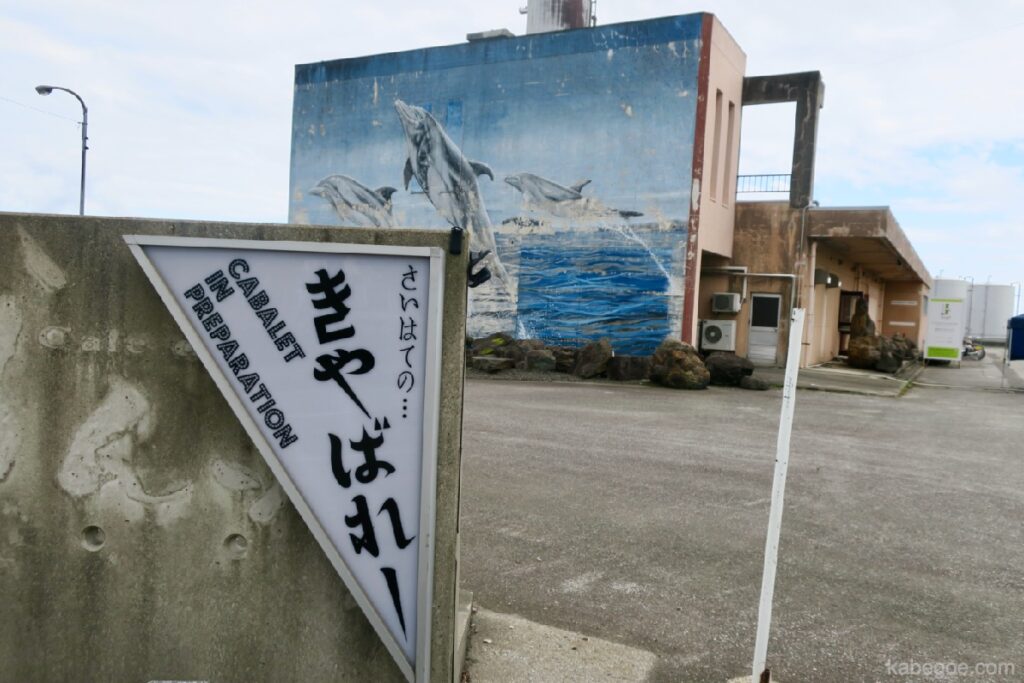
It used to be a waiting room for liners, but now it is the main product sales venue for the Oku Noto International Art Festival.
Stop by first and buy a work appreciation passport and guidebook.
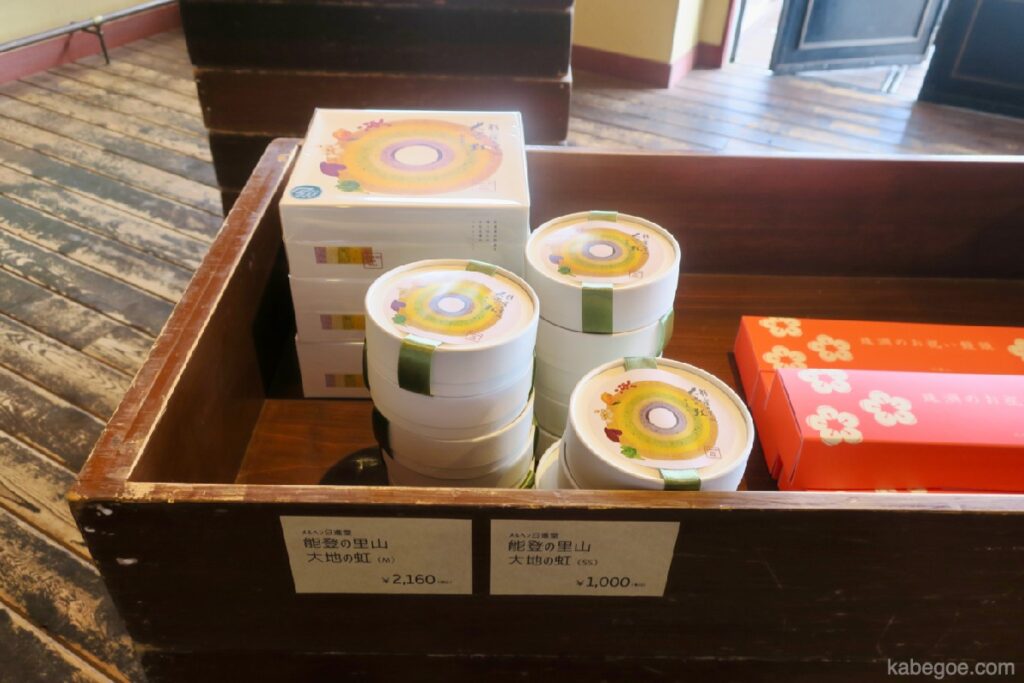
Local specialties were also sold, and this Baumkuchen was delicious.
Even the smaller one costs 1000 yen, so it's a little expensive.
Something Else is Possible: Tobias Labelger (formerly Takojima Station)
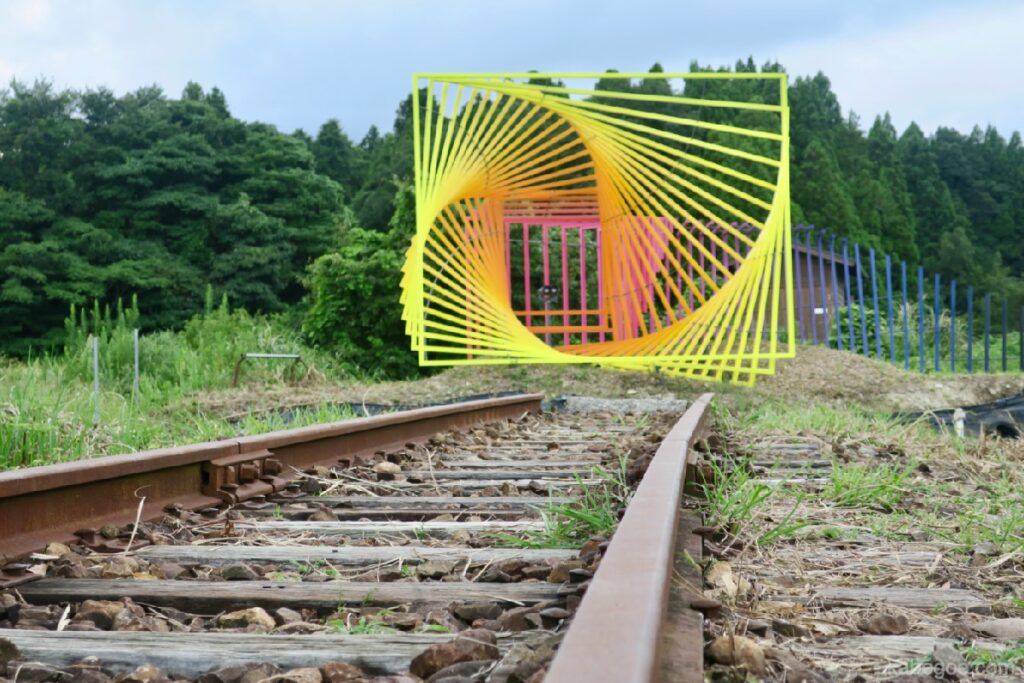
It is an object installed at Takojima Station, which has become an abandoned station.
This is a continuation of the previous race since the first race (2017).
It is an interesting visual that the frame is arranged so that it undulates.
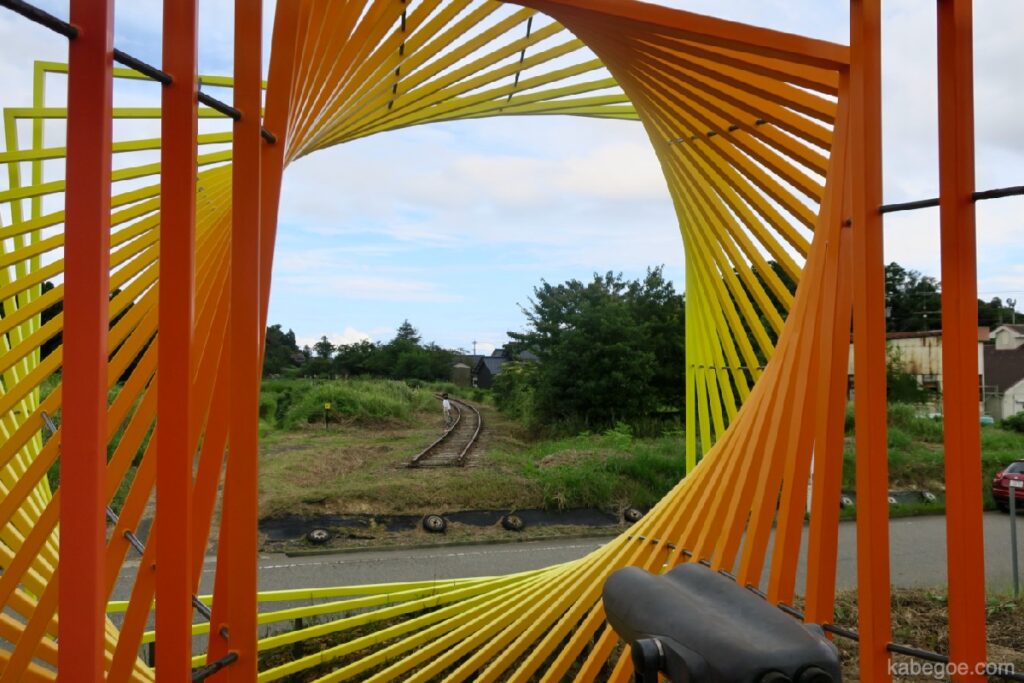
You can enter the work, and the binoculars are meaningfully attached to the center.

If you look through the binoculars, you will see the neon lights of "Something Else is Possible," which is also the title of the work.
It seems to be the author's message.
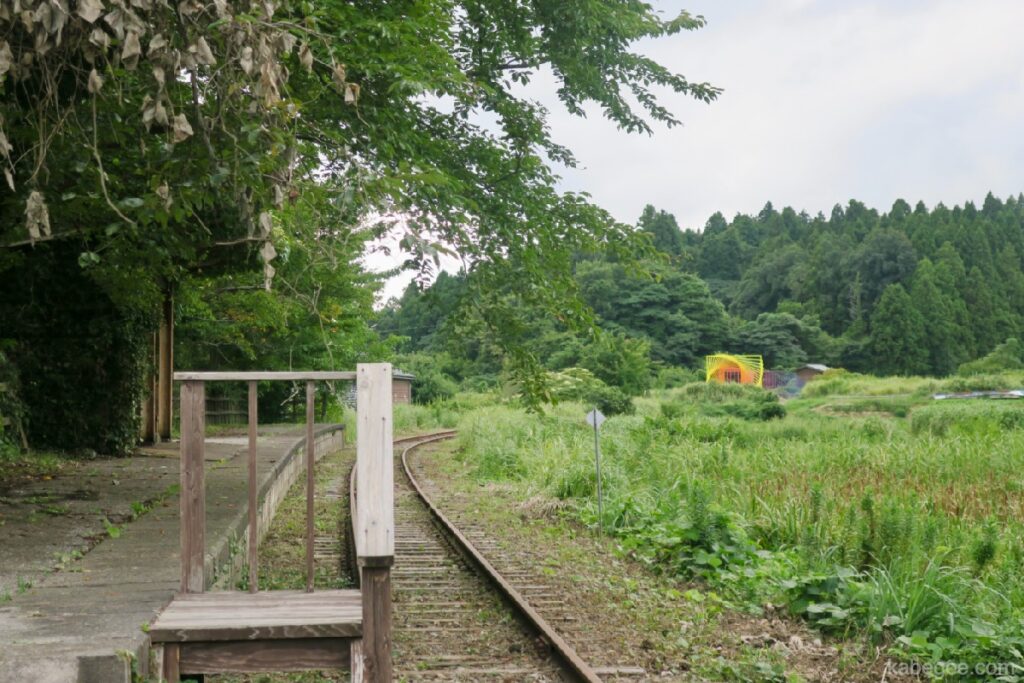
You can walk on the railroad tracks to the old platform, but it's farther than you think.
I went too far and was a little tired so let's turn back in moderation. ..
😂: Dylan Kaku (Old Noto Ukai Station)
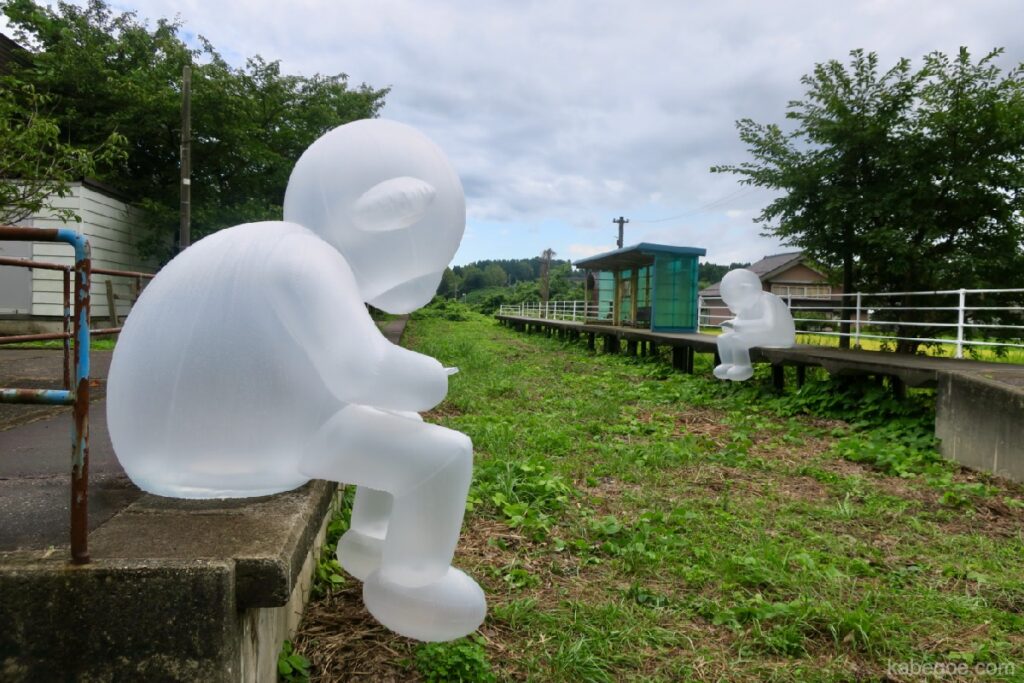
The title of the work is only the emoticon "😂".Innovative.
This is also an exhibition place at an old station.
This translucent monkey is said to represent people who are absorbed in smartphones.
Drifting Note: Riki Gozan (La Porte Tin)
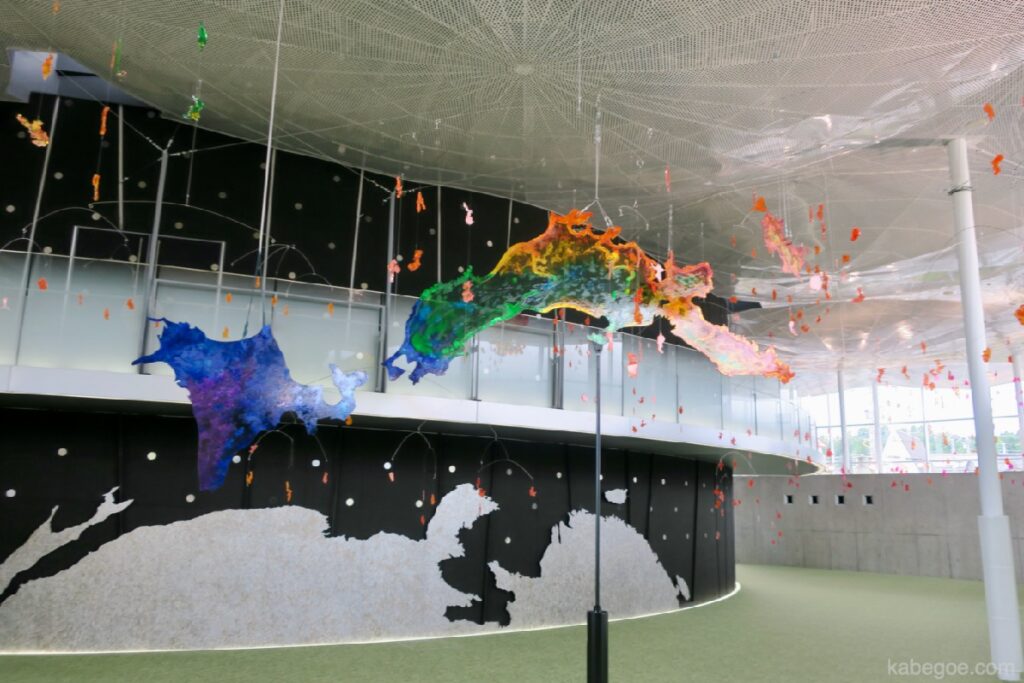
It is a work that expresses all the manned islands in Japan.
If you look closely, the Noto Peninsula plays a central role in supporting Japan as a whole.
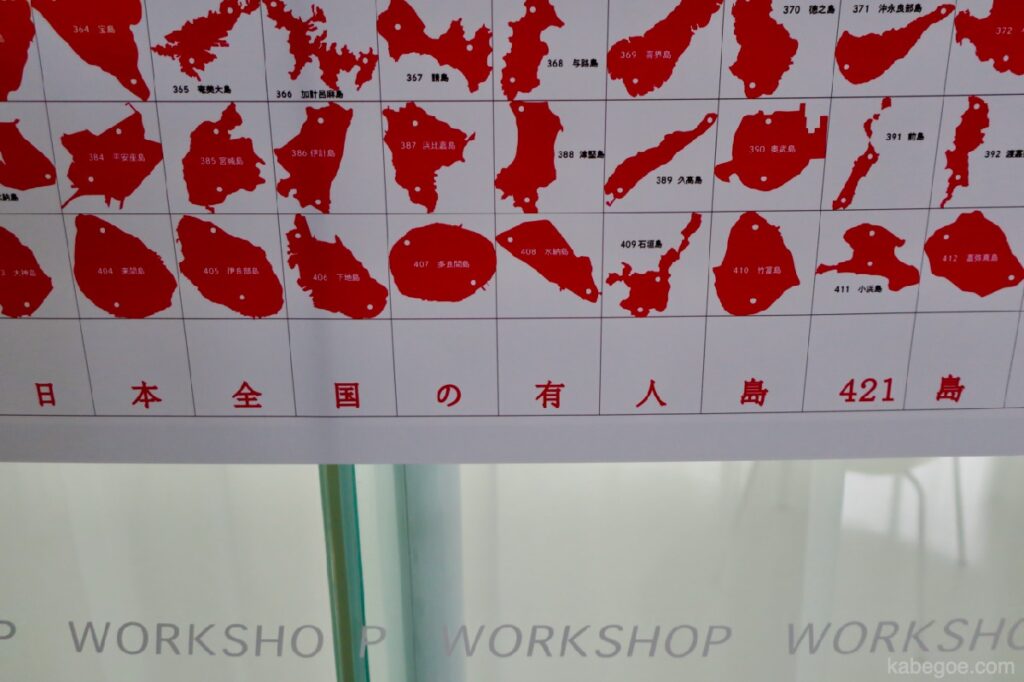
Each one has a name, but I can't tell them apart ...
The islands are color coded according to warm or cold currents.
Whale Legend Ruins: To Wei Chen (former Hioki Elementary and Junior High School Ground)
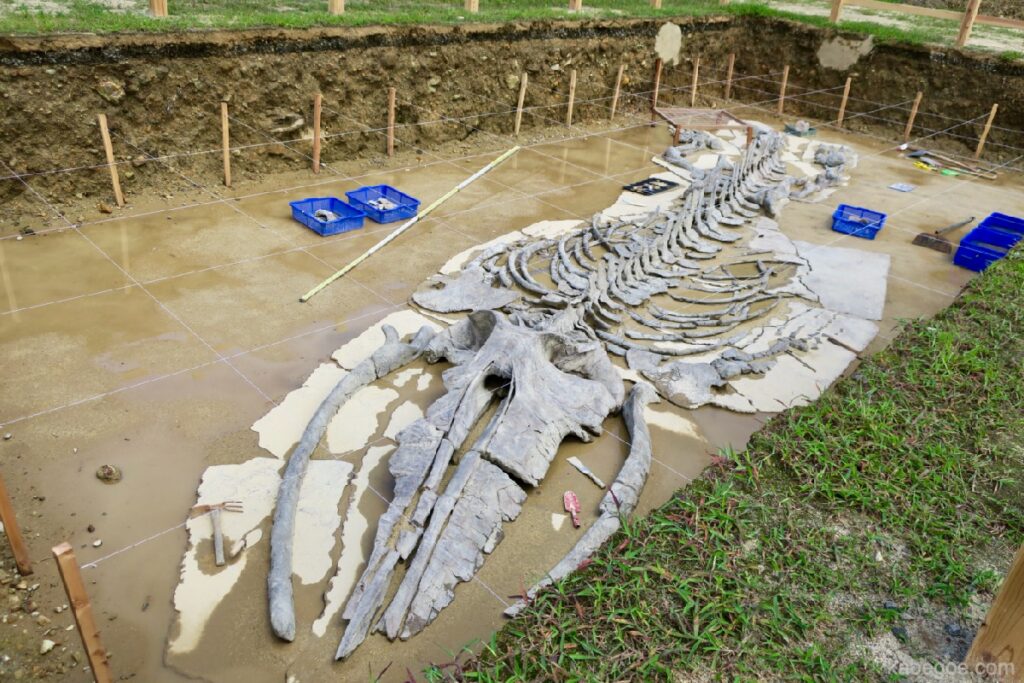
In Suzu City, there are traces of eating whales since the Jomon period, and many whale legends remain.
It is a work that makes such a whale look as if it was excavated.
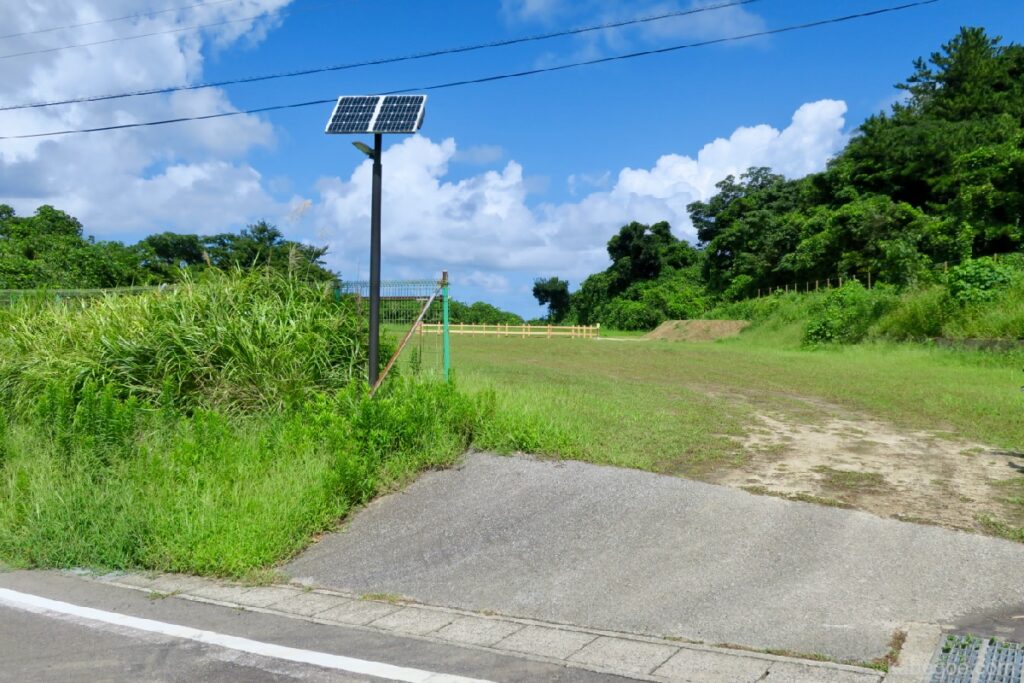
It was a little difficult to find the exhibition location, so I passed by once in front of the work.
It's in this ground, so don't miss it.
Thinking about me: Subodh Gupta (Sasami Beach)
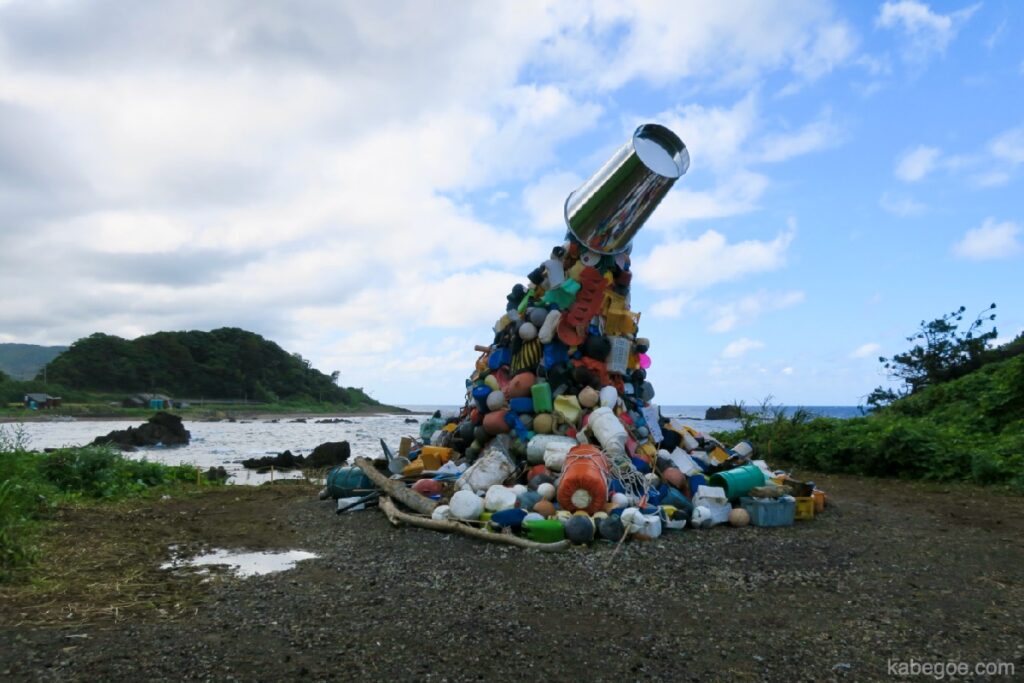
It is a work that combines drifting objects.
Due to the ocean currents, Suzu City is said to be a landform where various drifting objects can easily flow.
Tradeplace for immigrant life: Kei Murakami (Roadside Station Suzunari)
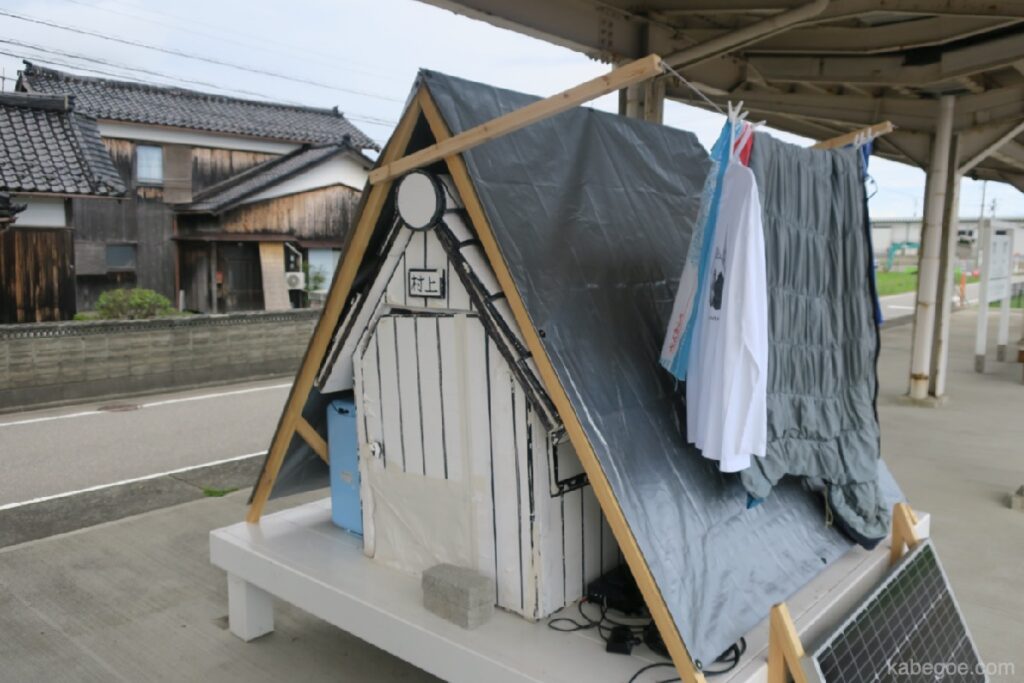
It looks just like a hut, but the author, Mr. Murakami, is responsible for this and is living in Japan.
A moving image like a hermit crab is flowing near the entrance, so don't miss it.
The biggest surprise is that the author who lives like that is married.
Suzu Theater Museum (formerly Western Elementary School)
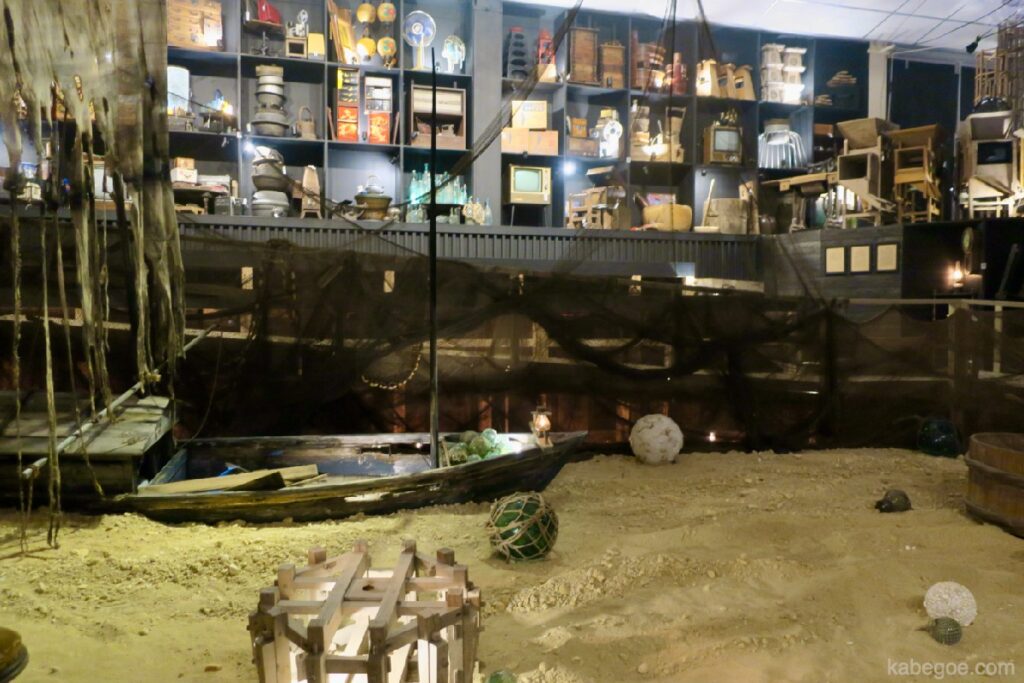
This museum is a renovated former elementary school.
Old folk implements are on display, and works on the theme of Suzu's history and climate are lined up.
What I personally liked was outside this facility.
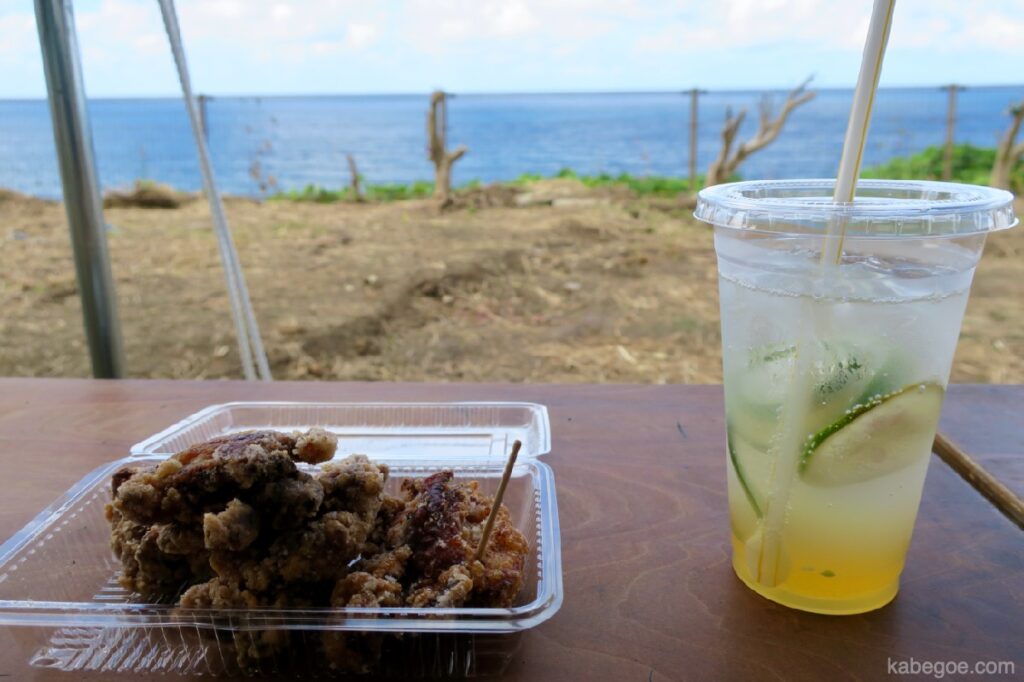
It is fried chicken and lemonade sold in the outside tent.
The sourness of fried protein and lemonade permeated the body that ran around the Noto Peninsula by bicycle.
It is recommended because it slightly exceeds the level of the event stalls.Especially lemonade.
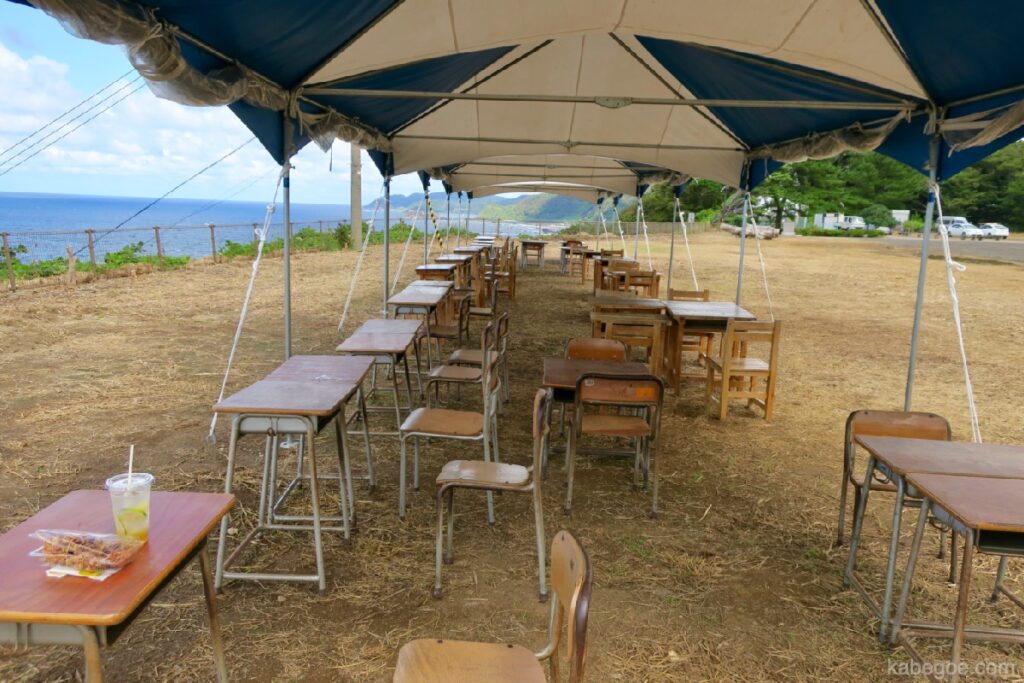
By the way, the dining space uses the chairs and desks that were in the elementary school.
There were other rice balls on the menu table, but they were sold out.
Recommended accommodation
The Noto International Arts Festival will be held in Suzu City as a whole, so I think it's a little difficult to go around in one day.
If possible, I would like to have one night and two days, so I would like to introduce a recommended inn.
Suzu Onsen Notojiso
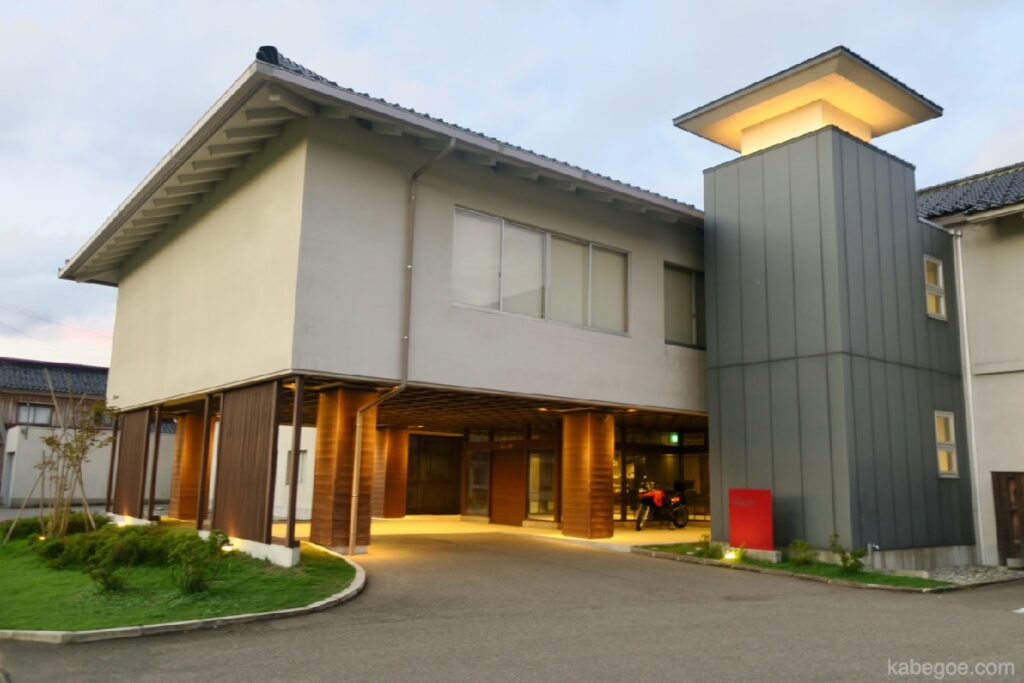
This is the hotel where I stayed.
There is a famous scenic spot called "Mitsukejima" in Suzu City, but the deciding factor was that it was close to that.
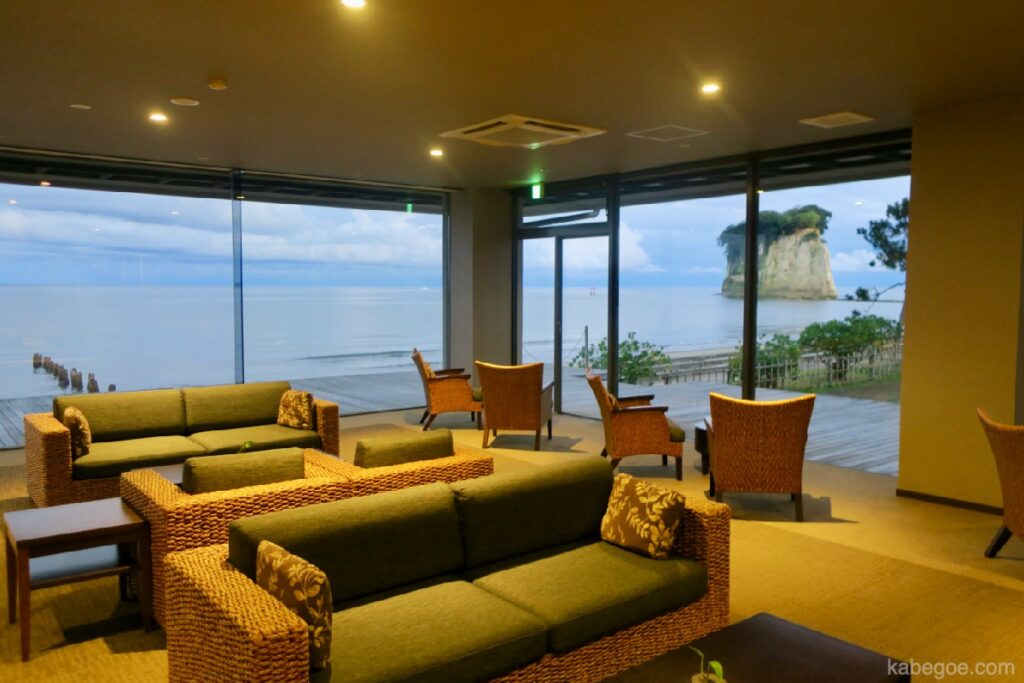
How close it is is the level you can see from the hotel lobby. (The rock you can see outside the window is Mitsukejima)
Of course, you can enjoy the scenery from the room (on the sea side) or from the open-air bath.
By the way, the bath is a hot spring, but there is only one open-air bath, and men and women change daily, so be careful.
See "Notojiso" on Rakuten Travel
See "Notojiso" in Jalan ![]()
Recommended way to go around
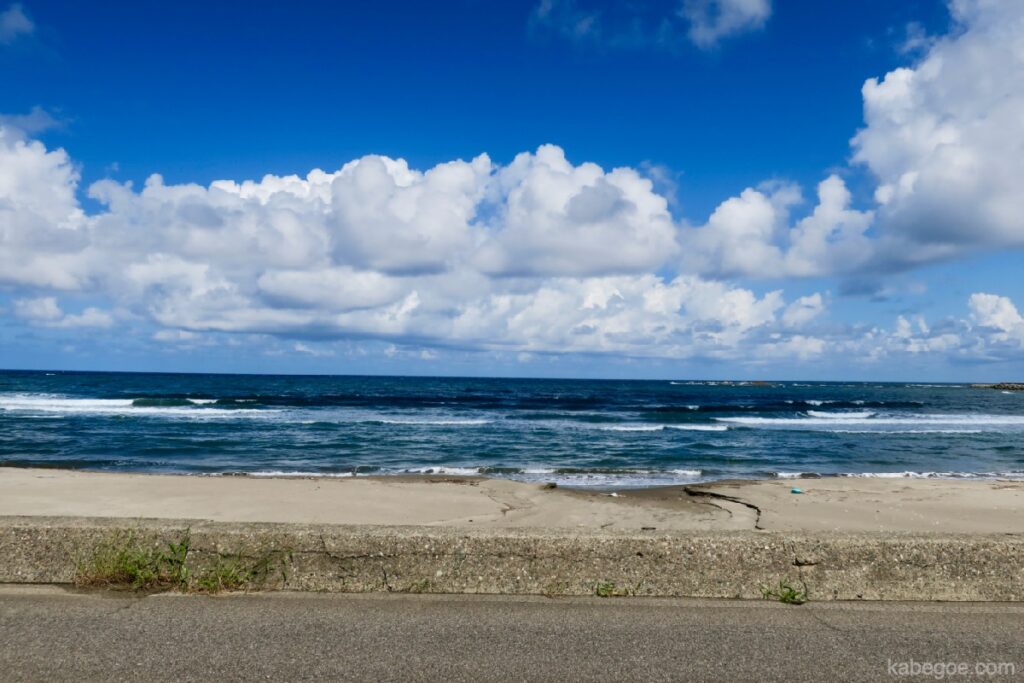
We recommend overwhelmingly rental cars.
The bus runs as it is, but it is inconvenient because the small turn does not work.
Arrange a rental car when you arrive at Noto Airport or Anamizu Station.
I think it is a good plan to go around the south side of Suzu City on the first day and the north side on the second day.
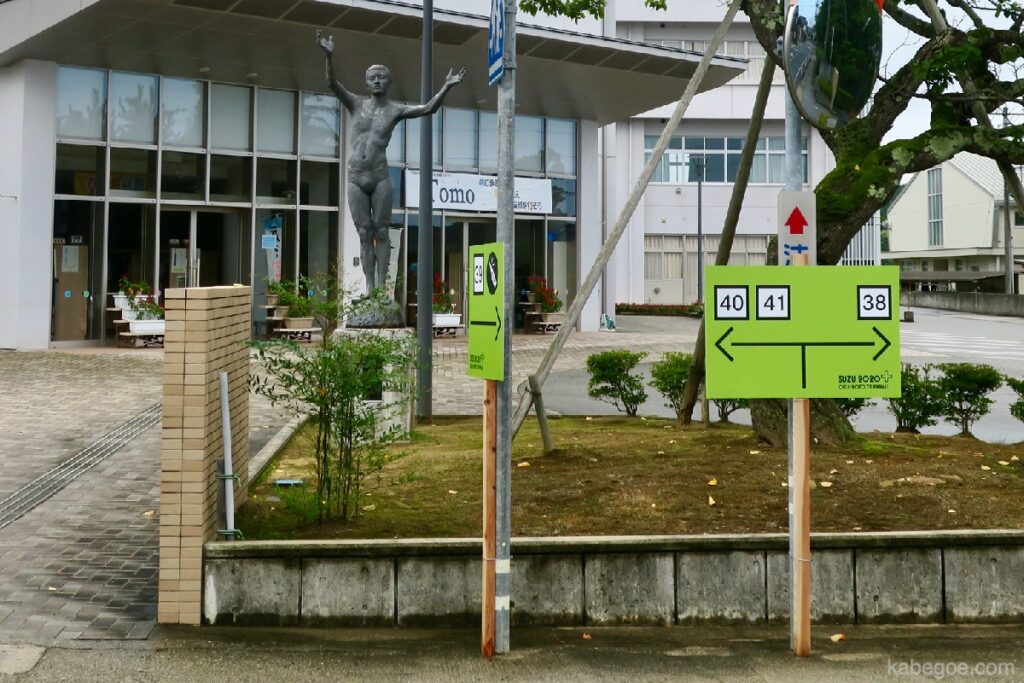
There are information boards in the city, so you can reach it by holding down the number of the work you want to see.
There is also a rental cycle
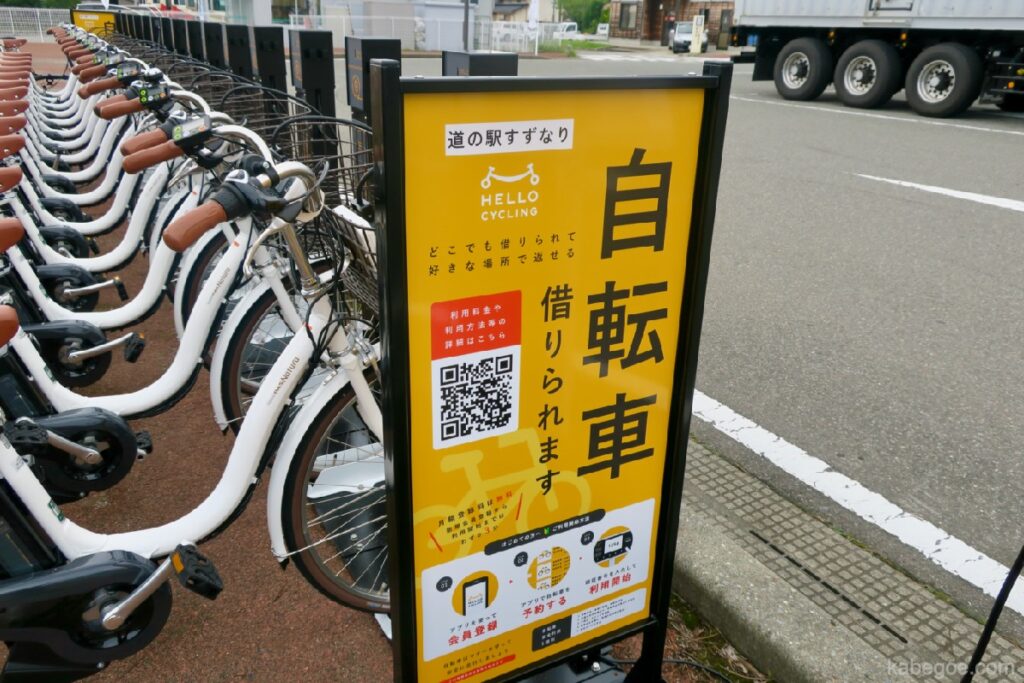
If you want to go around the south of Suzu City, I think the option of bicycle is also an ant.
You can rent an electric bicycle at "Roadside Station Suzunari".
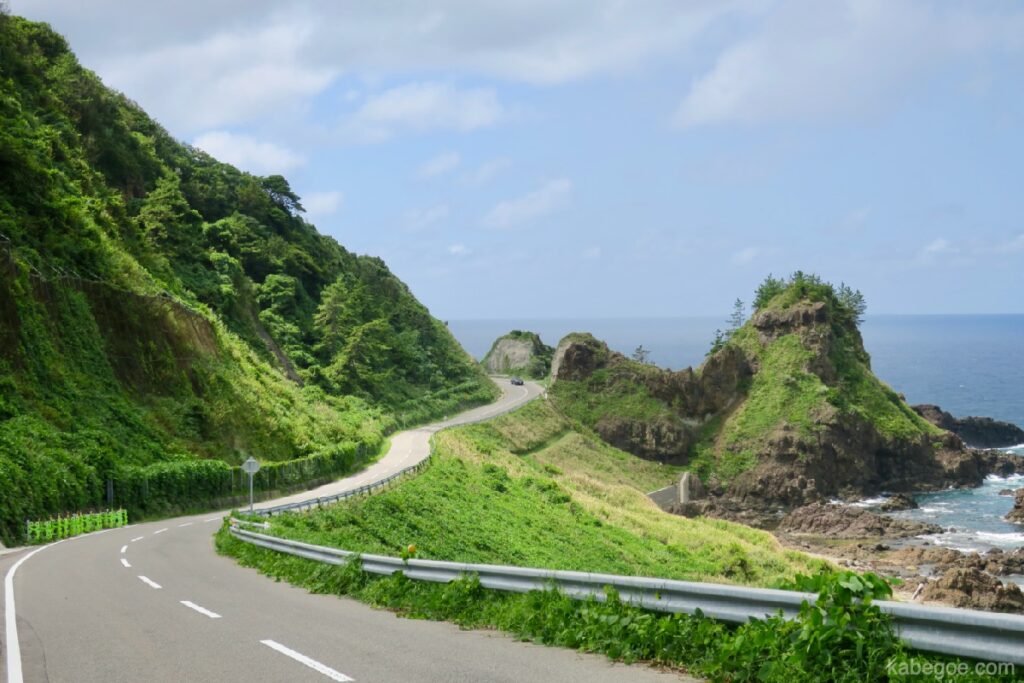
By the way, I used my bicycle to go north and south.
There are some ups and downs, but the scenery is beautiful so it didn't bother me.
However, please note that the weather in Suzu is volatile.
Actually, it rained several times, so I recommend renting a car.
Prices and guidebooks
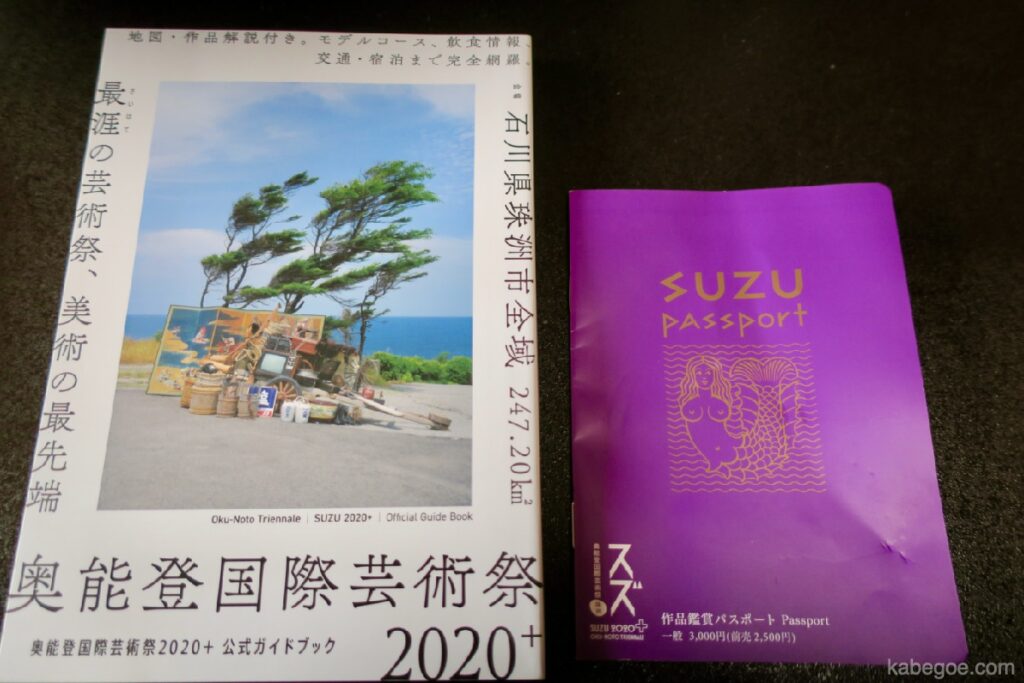
The work appreciation passport is 3000 yen for adults, 1200 yen for college students, and 500 yen for elementary, junior high and high school students.
If you want to see the works individually, it costs 300 yen, and only the Suzu Theater Museum costs 800 yen, but in the case of outdoor works, no one collected it.
It feels like you can go around for free if you only have outdoor works, but you should buy a passport so that you can enjoy it comfortably.
Where to buy your passport: Official website
The guidebook is 1300 yen, so buy it to deepen your understanding.
In addition to "Saihate Cabaret", you can buy it at roadside stations in Suzu City.
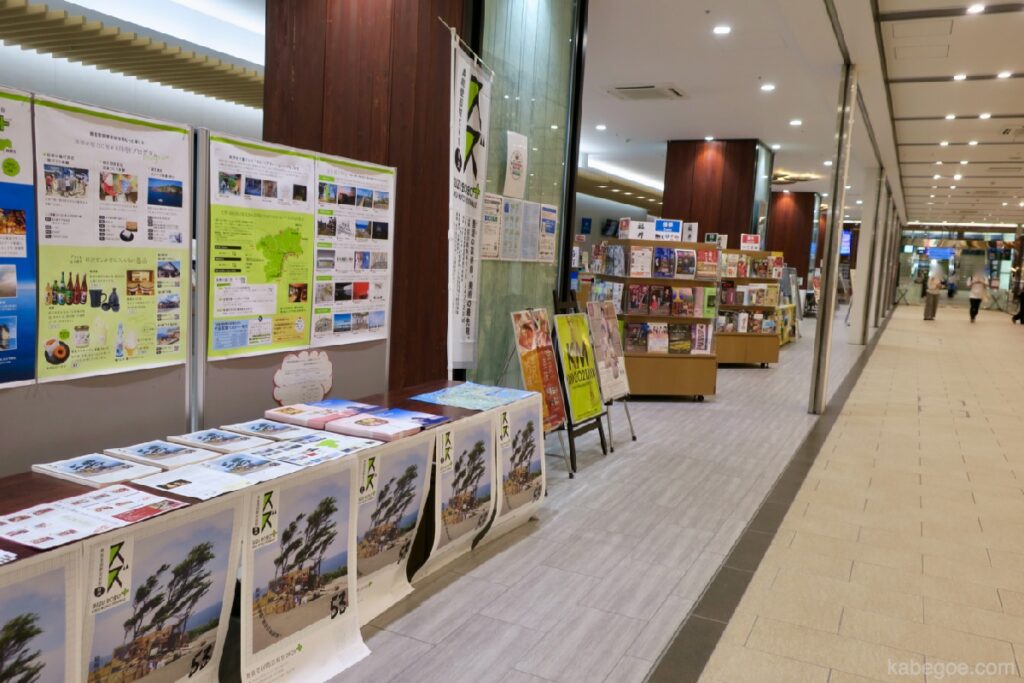
Maps are also sold for 100 yen, but a free paper with a map at a station was enough.
The free paper was also placed at the tourist information center at Kanazawa Station, so if you are going through Kanazawa, save it.
Session and business hours
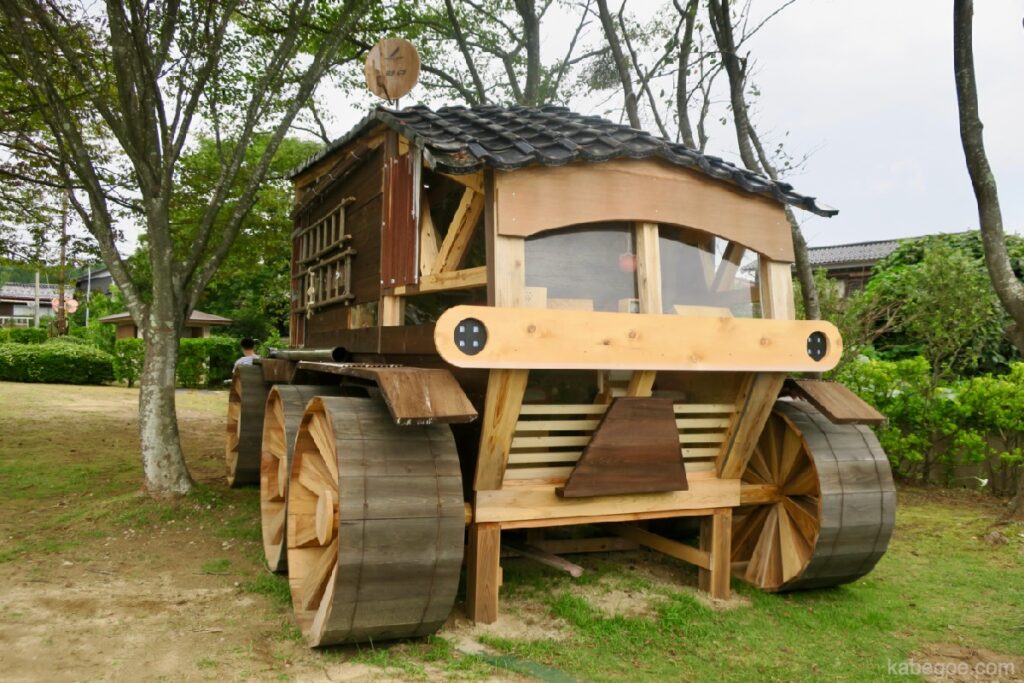
| Session | September 2021th (Sat) -November 9th (Fri), 4 | |
| Opening hours | 9:30 - 17:00 | |
| Closing days | Thursdays excluding public holidays (open on November 11th) | |
| Official website | Opening hours(Please check the latest information) | |
The works you can appreciate will change depending on the situation of the corona, so be sure to check the official website in advance.
(From October 10st, all works have been released)
Access
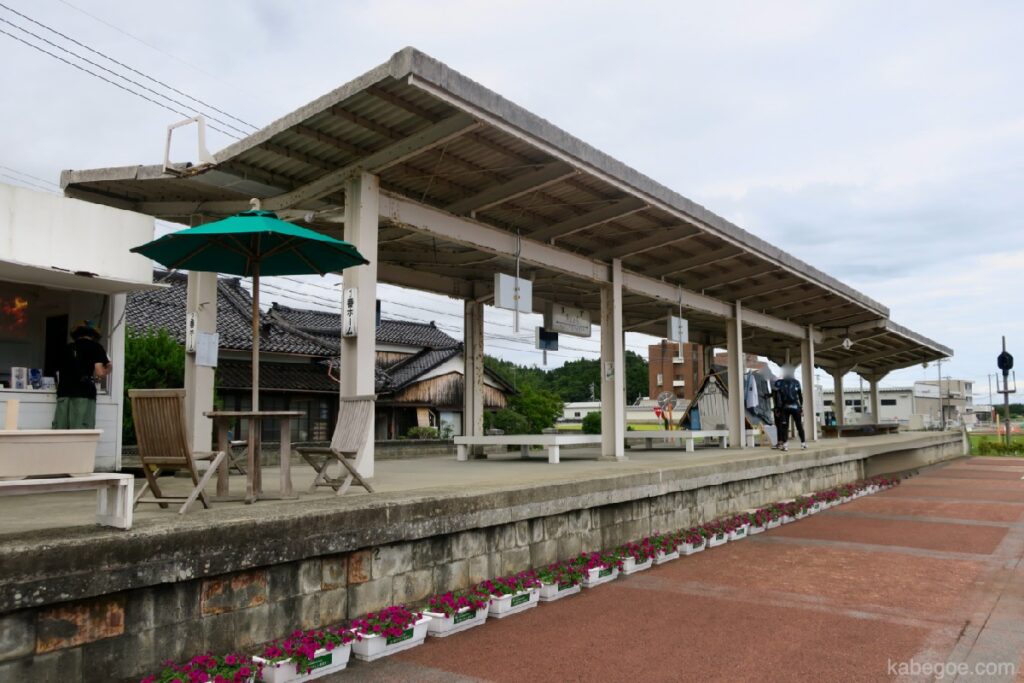
| Address | 927-1214 Iidamachi, Suzu City, Ishikawa Prefecture 1-13 | |
| Phone | 0768-82-7720 | |
| airplane | 1 hour from Haneda Airport to Noto Airport (1 flights a day) | |
| Electric train | 2 hours 30 minutes to 3 hours from Kanazawa Station | |
| Official Website | Access(Please check the latest information) | |
I think it's best to visit by plane from eastern Japan and by train from western Japan.
By train, you can reach Kanazawa Station by Shinkansen or Thunderbird relatively quickly, but be prepared for it to take another 3 hours to get from Kanazawa to Suzu City.
As a means of transportation from Kanazawa Station, we also recommend using the sightseeing trains "Hanayome Noren" and "Noto Satoyama Satoumi".
Map
Finally

The Oku Noto International Arts Festival is still the second new art festival.
It seems that there will be works that will be exhibited permanently even after the exhibition, so I think that the highlights will increase with each round.
There are many works that you can enjoy even if you are not interested in contemporary art, so please take this opportunity to visit Suzu City.
Sightseeing spots you want to go with
Mitsukejima
-
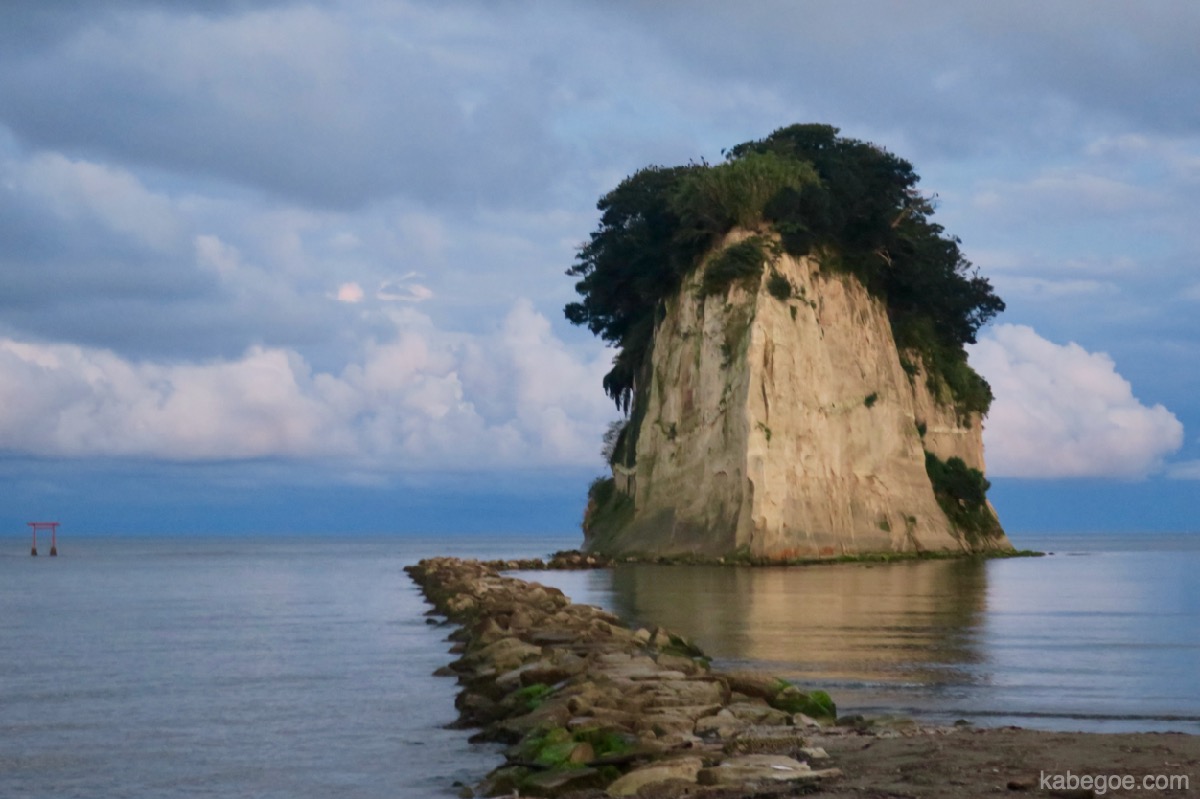
Mitsukejima | Stay at the hotel "Notojiso" and enjoy the day (Ishikawa) ★☆ ☆
This is an introduction to "Mitsukejima" in Ishikawa Prefecture.
We recommend staying at a nearby hotel to enjoy the changes of the day.see next
It is a scenic spot that represents Suzu City, and is also known as "Gunkanjima".
It is lit up at night and goes well with the sunrise and sunset, so you can enjoy it whenever you visit.
Blue Grotto
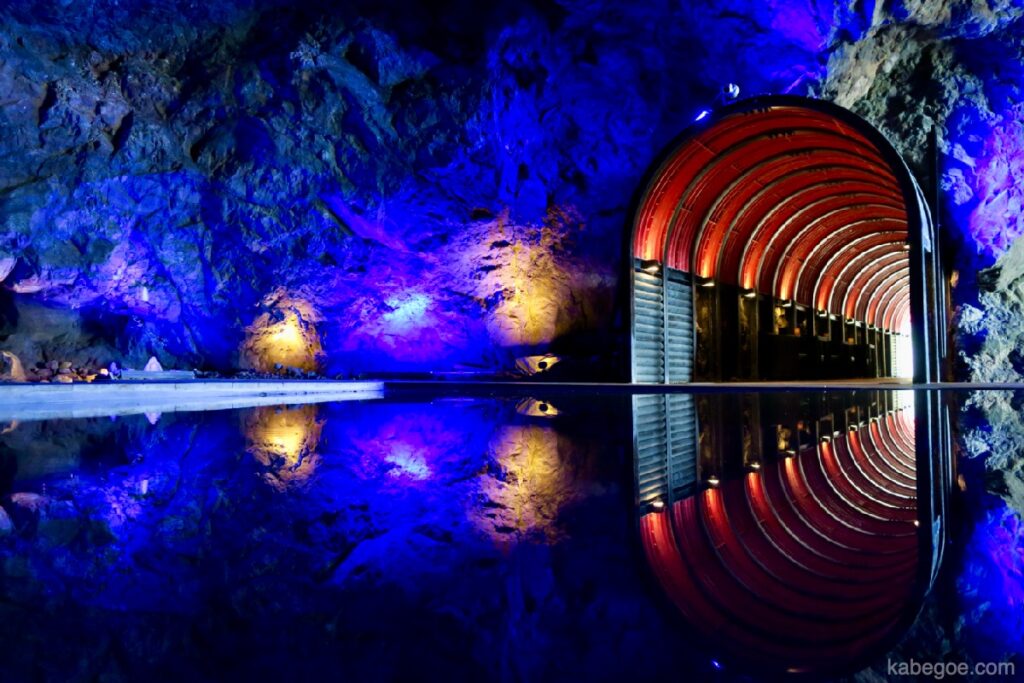
It is a facility attached to the famous inn "Lamp no Yado".
Actually, it was notorious, and I had heard in advance that it was a disappointing spot full of man-made objects, so I didn't get that bad impression.
Rather, there were few customers and I was personally satisfied.I don't really feel the power spot.
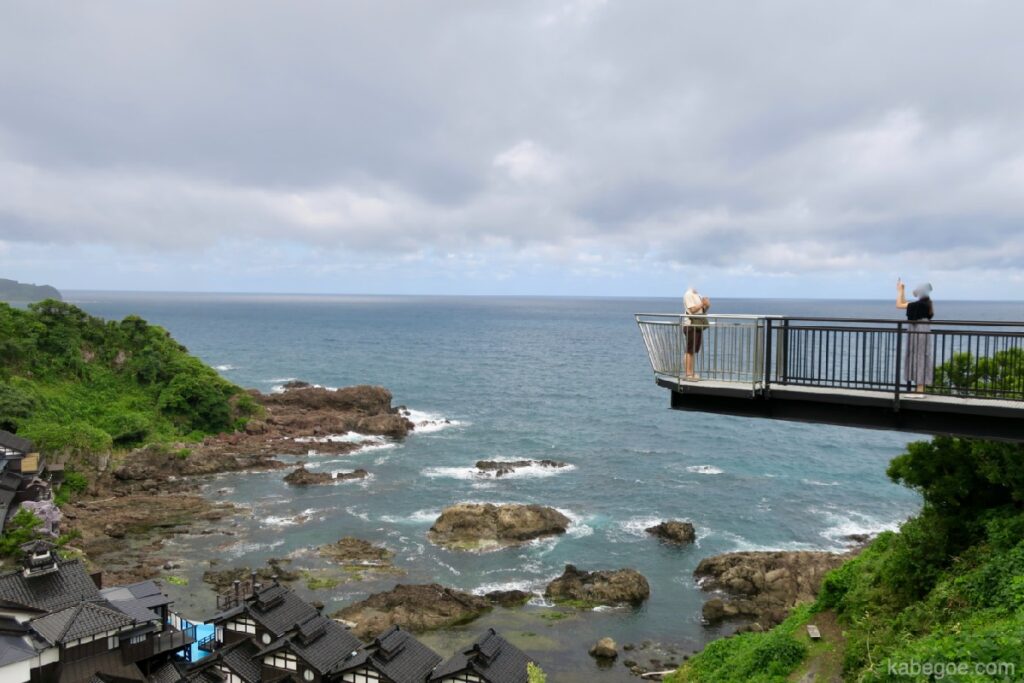
The observatory is also in the same place and is included in the price of 1500 yen.
If you have a passport for the Oku Noto International Art Festival, you can get a discount, so use it.